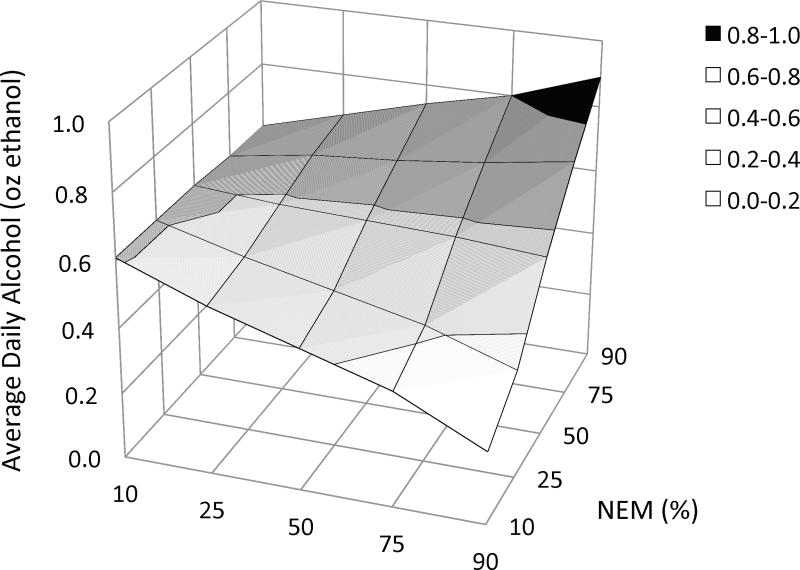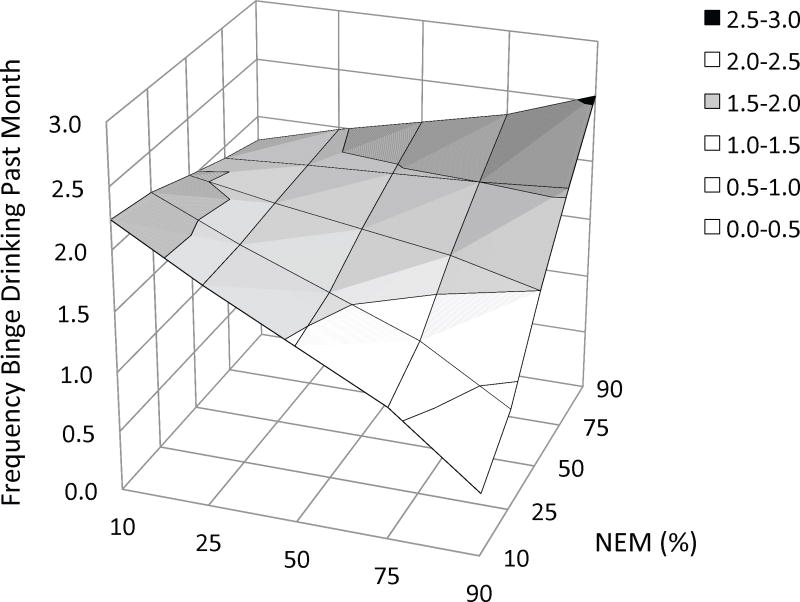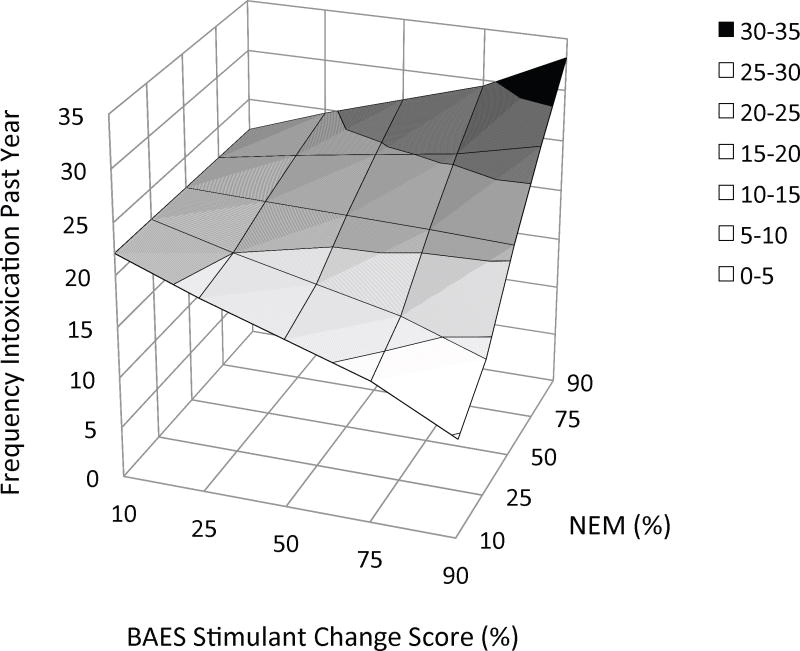Fig. 2.
Three-dimensional plots of the relationship between three measures of alcohol use and the combination of stimulant response and negative emotionality, as derived from multiple linear regression. In each figure the criterion variable is plotted on the Y-axis: (a) average daily alcohol intake, (b) frequency of binge drinking, and (c) frequency of intoxication. Values on the X-axes represent the percentile ranking of the change in BAES Stimulant scale score (90 m postdrug – baseline) and values on the Z-axes represent the percentile ranking of NEM score. Thus, the effect of NEM on each measure of alcohol use is depicted at different levels of the amphetamine response along the Z-axis. The figures suggest that the amphetamine response has a moderating effect on the relationship between negative emotionality and these measures. Alcohol use is little affected by negative emotionality for subjects with a blunted response to amphetamine (left side of the hyperplane). In contrast, among subjects with a stimulant response to this low dose of amphetamine, alcohol use increases as negative emotionality increases (right side of the hyperplane). Threshold change scores, above which this relationship reaches statistical significance, were provided by Johnson-Neyman post hoc analyses: (a) daily intake: 2.5 [52%]; (b) binge drinking: 10.6 [77%]; and (c) intoxication: 12.8 [82%]. BAES = Biphasic Alcohol Effects Scale; MPQ NEM = Negative Emotionality, higher-order factor scale on the Multidimensional Personality Questionnaire.



